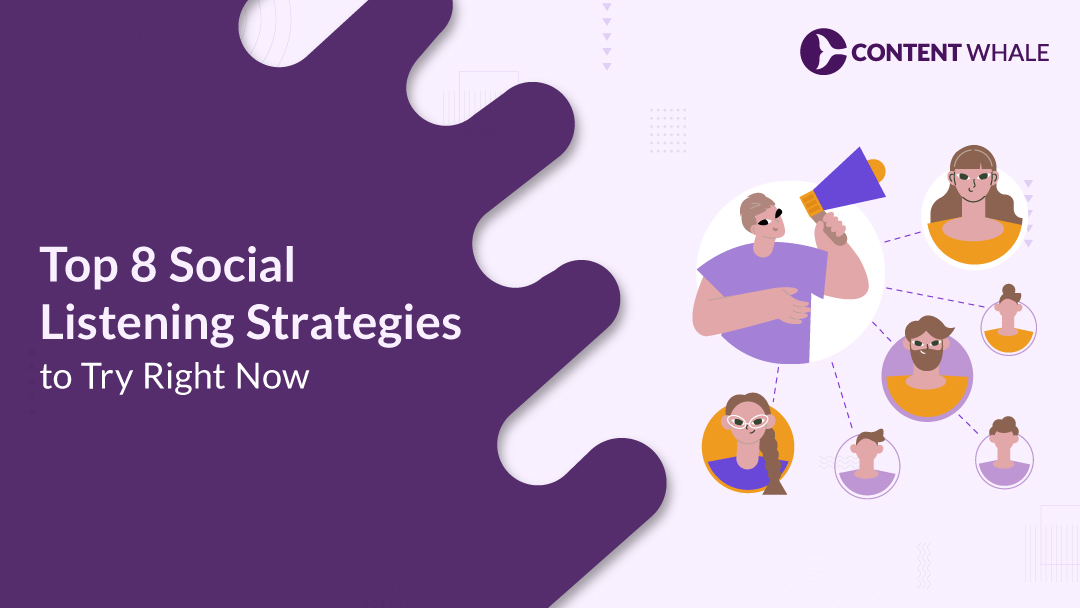Quick Summary
Learn 10 strategies to create compelling social media content. Boost your social media engagement with effective social media tips. Enhance your digital marketing efforts through strategic content creation and online engagement techniques.
Creating effective social media content is more important than ever in the modern world of digital marketing. With 90% of the population actively using social media, brands must leverage these platforms to connect authentically with their audiences and enhance their online presence. Effective content can significantly boost audience engagement, driving both brand visibility and loyalty. In this blog, we will explore 10 proven strategies to enhance your social media strategy:
- Understanding your audience to create relevant content.
- Developing a content calendar for consistent posting.
- Leveraging user-generated content to boost authenticity.
- Using high-quality visuals to capture attention.
- Crafting compelling copy to engage readers.
- Incorporating storytelling to build connections.
- Utilizing hashtags strategically for increased visibility.
- Engaging with your audience through comments and messages.
- Monitoring and analyzing performance to refine strategies.
- Staying updated with the latest trends and innovations in social media engagement.
By implementing these strategies, you can optimize your content marketing efforts and improve your brand’s online presence. Whether you’re a seasoned marketer or new to the field, these tips will help you create digital content that resonates with your audience and drives results.
1. Understand Your Audience
Importance of Knowing Your Target Audience
Understanding your target audience is essential for creating relevant social media content. By knowing who your audience is, you can tailor your messages to resonate with their interests, leading to higher audience engagement and better social media marketing results.
Tips for Researching Audience Preferences
- Analyze Demographics: Use tools like Google Analytics and social media insights to gather data on age, gender, location, and income levels.
- Understand Psychographics: Look into interests, values, and online behaviors using social listening tools and direct feedback from surveys and polls.
Creating Detailed Audience Personas
Develop detailed audience personas to guide your content strategy. Include demographic and psychographic details to tailor your content creation efforts to meet the specific needs and preferences of your audience. This ensures your digital content is both engaging and effective, ultimately boosting your online presence and social media engagement.
2. Develop a Content Calendar
Benefits of a Content Calendar
Using a content calendar to plan and organize your social media content brings numerous benefits. It ensures consistency in posting, which is key for maintaining audience engagement. A well-structured calendar helps you avoid last-minute scrambles by allowing you to plan ahead, thus saving time and reducing stress. This systematic approach supports better content optimization and ensures that your digital marketing efforts are cohesive and aligned with your overall content strategy.
Tips for Creating a Content Calendar
- Choose the Right Tools: Tools like Kontentino, Google Sheets, or Trello can help you manage your calendar efficiently. These platforms allow you to schedule posts, collaborate with team members, and track performance metrics.
- Balance Content Types: Ensure your calendar includes a mix of promotional, informative, and engaging posts to keep your audience interested. Follow rules like the 80-20 rule, where 80% of your content is valuable and 20% is promotional.
- Schedule Consistently: Regular posting builds a reliable online presence. Decide on a posting frequency that fits your resources and stick to it to maintain social media engagement.
Examples of Effective Content Calendars
- Buffer’s Social Media Calendar: Simple and user-friendly, ideal for small teams.
- Later’s Visual Planner: Great for visually-driven platforms like Instagram and Pinterest.
- Asana’s Integrated Calendar: Perfect for larger teams needing advanced features like collaboration and analytics tracking
3. Leverage User-Generated Content

Enhance Authenticity and Engagement
User-generated content (UGC) enhances the authenticity of your social media content by showcasing real customer experiences. Consumers are more likely to trust and engage with content created by their peers rather than polished brand advertisements. Encouraging UGC can significantly boost online engagement and build a stronger community around your brand.
Strategies for Encouraging UGC
- Create Hashtag Campaigns: Encourage your audience to share their experiences using a branded hashtag. For example, Canon’s #ShotOnCanon campaign effectively showcases user-generated photos.
- Host Competitions: Run contests where participants share their content to win prizes. This not only generates a lot of UGC but also increases audience engagement.
- Feature Customer Stories: Highlight customer reviews, testimonials, and photos on your social media profiles and website. This acts as social proof and boosts credibility.
Examples of Successful UGC Campaigns
- GoPro: Consistently features user-generated videos, showcasing the versatility of their cameras in various adventurous scenarios.
- Starbucks #RedCupContest: An annual competition where customers share their creative cup designs, driving massive engagement and visibility.
- Deux Par Deux Kids: Utilizes influencer partnerships to generate authentic content, resulting in significant follower growth and brand advocacy.
4. Use High-Quality Visuals
Importance of Visuals
High-quality visuals are essential in social media content as they capture attention and convey messages quickly. Effective visuals can significantly boost audience engagement and enhance your digital marketing efforts by making content more shareable and memorable.
Tips for Creating High-Quality Visuals
- Use Relevant and High-Resolution Images: Ensure your images are relevant to your message and of high resolution to maintain professionalism. Tools like Unsplash and Pexels offer free high-quality images.
- Incorporate Brand Elements: Consistently use your brand’s colors, fonts, and logo to reinforce your brand identity. Subtle branding helps in building recognition without being intrusive.
- Experiment with 3D Graphics and AR Filters: These elements add depth and interactivity, making your visuals more engaging and up-to-date with current trends.
Tools and Resources
- Canva: A user-friendly tool for creating graphics with various templates.
- Adobe Creative Cloud: Professional software for advanced design needs.
- Figma: Excellent for collaborative design projects
5. Craft Compelling Copy
Role of Engaging Copy
Engaging copy is crucial in social media content as it captures attention, conveys your message effectively, and prompts action. Clear and concise writing ensures your audience understands your message quickly, which is vital given the short attention spans on social media.
Tips for Writing Impactful Copy
- Use the Four U’s Formula: Make your content Useful, Urgent, Unique, and Ultra-Specific. This ensures your copy stands out and resonates with your audience.
- Implement AIDA: Attention, Interest, Desire, Action. Start with a compelling headline, build interest with benefits, create desire by addressing pain points, and include a clear call-to-action.
- Incorporate Storytelling: Share relatable stories to create emotional connections. Brands like Coca-Cola and Red Bull excel at using storytelling to engage their audience.
Examples of Effective Social Media Captions
- Nike: “Just Do It. Unleash your potential.”
- Starbucks: “Sip a bit of summer with our new tropical flavors.”
- National Geographic: “Explore the wonders of our planet with us.”
6. Incorporate Storytelling

Power of Storytelling
Storytelling is a powerful tool in social media content because it creates emotional connections and makes content memorable. Effective storytelling can significantly enhance audience engagement, fostering a deeper relationship between the brand and its audience.
Tips for Integrating Storytelling
- Know Your Audience: Understand your audience’s needs and preferences to craft stories that resonate. Use data analytics to refine your stories and ensure they are relevant and engaging.
- Use Relatable Characters and Scenarios: Incorporate characters and scenarios that reflect your audience’s experiences. This makes your stories more authentic and relatable.
- Visual Storytelling: Leverage images, videos, and infographics to enhance your narrative. Visual content is more likely to capture attention and be remembered.
Examples of Effective Storytelling
- Dove’s Real Beauty Campaign: Focused on authentic stories challenging traditional beauty standards, resonating widely with diverse audiences.
- Airbnb’s “Belong Anywhere” Campaign: Emphasized personal stories of travelers and hosts, creating a sense of community and belonging.
7. Utilize Hashtags Strategically (150 words)
Importance of Hashtags
Hashtags are vital for increasing the visibility of your social media content. They categorize your posts, making them discoverable to users interested in those topics, which enhances online engagement and boosts your brand’s online presence.
Tips for Researching and Selecting Hashtags
- Research Trending Hashtags: Use tools like RiteTag or Instagram’s Explore page to find popular and relevant hashtags for your industry. This helps you tap into current trends and reach a wider audience.
- Mix Popular and Niche Hashtags: Combine broad, popular hashtags with more specific niche ones to target both a wide and specific audience. For example, mix #DigitalMarketing with #ContentCreationTips for better content optimization.
- Analyze Hashtag Performance: Regularly review which hashtags drive the most engagement on your posts using analytics tools. This allows you to refine your social media strategy by focusing on the most effective tags.
Examples of Effective Hashtag Strategies
- Nike’s #JustDoIt: Consistently used to reinforce their brand identity.
- Airbnb’s #BelongAnywhere: Promotes a sense of community and belonging.
- National Geographic’s #NatGeoWild: Enhances the reach of their wildlife content.
8. Engage with Your Audience
Importance of Interaction
Engaging with your audience is key to effective social media content. Interaction fosters a sense of community and loyalty, enhancing your online presence and digital marketing efforts. It’s not just about gaining followers, but building meaningful relationships with them.
Tips for Responding to Engagement
- Be Responsive: Reply to comments, messages, and mentions promptly. This shows your audience that you value their input and are actively listening.
- Encourage Conversations: Ask questions and start discussions to boost audience engagement. For example, Starbucks frequently engages with followers through witty and relatable replies on Twitter.
- Leverage User-Generated Content: Share content created by your audience. This not only provides social proof but also makes your followers feel valued and connected to your brand.
Examples of Brands with High Engagement
- Wendy’s: Known for their quick and humorous replies, which keep conversations lively and engaging.
- Coca-Cola: Regularly responds to user posts, whether positive or negative, showing their commitment to customer satisfaction.
9. Monitor and Analyze Performance

Importance of Tracking Performance
Regularly monitoring and analyzing the performance of your social media content is essential for refining your social media strategy and ensuring your efforts drive results. It helps you understand what types of content resonate with your audience, which can enhance online engagement and improve your overall digital marketing efforts.
Tools and Metrics to Monitor
- Engagement Rate: This metric measures how well your content is resonating with your audience. It includes likes, comments, shares, and other interactions as a percentage of your total followers or reach.
- Follower Growth Rate: Track how quickly you are gaining or losing followers. This can indicate the effectiveness of your content and engagement strategies.
- Conversion Rate: Measure how often your social content leads to desired actions, such as purchases or sign-ups, which is crucial for assessing the ROI of your social media campaigns..
Tips for Using Data
- Use Analytics Tools: Platforms like Hootsuite, Sprout Social, and Google Analytics provide comprehensive insights into your social media performance, allowing you to track and analyze key metrics efficiently.
- Regularly Review Metrics: Consistently analyze your data to identify trends and make data-driven decisions. Adjust your content strategy based on what works best for your audience.
10. Stay Updated with Trends and Innovations
Importance of Staying Current
Keeping up with the latest social media trends and innovations is vital for maintaining a competitive edge in digital marketing. As platforms evolve, new features and trends can significantly impact your social media strategy and content creation efforts, ensuring you stay relevant and engaging.
Tips for Integrating the Latest Trends
- Embrace New Technologies: Incorporate tools like AI and augmented reality (AR) to create more immersive and personalized social media content. These technologies can enhance audience engagement by providing unique and interactive experiences.
- Focus on Short-Form Videos: Platforms like TikTok and Instagram Reels continue to dominate with short, engaging videos. Utilize these formats to capture attention quickly and effectively.
- Leverage Social Commerce: Utilize shoppable posts and social commerce features to streamline the buying process directly within social media platforms, enhancing online engagement and driving sales.
Examples of Brands Leveraging Trends
- Nike: Uses AR to create interactive experiences for users, enhancing their content marketing.
- Sephora: Implements social commerce strategies to allow seamless shopping directly from their social media profiles.
Conclusion

Effective social media content is a cornerstone of successful digital marketing. By implementing the 10 strategies discussed, you can enhance audience engagement and drive better results. Consistently creating engaging content, understanding your audience, leveraging user-generated content, and staying updated with trends will help you maintain a strong online presence. At Content Whale, we specialize in crafting high-quality, tailored content that resonates with your audience. Let our expert team assist you in optimizing your social media strategy. Contact us today to transform your digital marketing efforts!
FAQs
Why is social media content important for digital marketing?
Social media content plays a pivotal role in digital marketing by driving online engagement and enhancing a brand’s online presence. It helps businesses connect with their audience on a personal level, fostering brand loyalty and increasing visibility. High-quality, engaging content can lead to improved social media marketing outcomes and higher conversion rates.
How can I better understand my target audience?
Understanding your target audience involves thorough research and analysis of demographic and psychographic data. Utilize tools like Google Analytics and social media insights to gather information on age, gender, interests, and online behavior. Creating detailed audience personas can guide your content strategy, ensuring your content creation efforts are tailored to meet the specific needs and preferences of your audience.
What are the benefits of using a content calendar?
A content calendar helps in planning and organizing your social media content, ensuring consistency and alignment with your social media strategy. It saves time, reduces stress, and allows for better content optimization. Tools like Trello and Asana can assist in managing your calendar efficiently, helping you maintain a steady flow of digital content and improving audience engagement.
How can I encourage user-generated content?
Encourage user-generated content (UGC) by creating branded hashtag campaigns, hosting contests, and featuring customer stories. UGC enhances authenticity and online engagement, making your brand more relatable. Successful examples include GoPro’s user videos and Starbucks’ #RedCupContest, which showcase real customer experiences and drive social media engagement.
What tools can I use to create high-quality visuals?
Creating high-quality visuals is essential for capturing attention on social media. Tools like Canva, Adobe Creative Cloud, and Figma offer robust features for designing engaging images, videos, and graphics. High-quality visuals contribute to better content marketing and improve your overall social media best practices by making your content more shareable and memorable.




